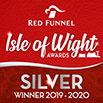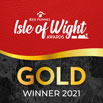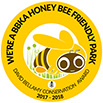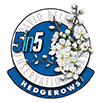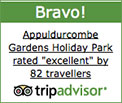
Gift to Nature
The Isle of Wight is a very special place. It is 21 miles wide by 13 miles long and half of its area is designated as an Area of Outstanding Natural Beauty, a nationally important landscape. Within its small area the Island has a very varied landscape with many different habitats.

With over 70% of its area protected for its natural and cultural heritage, it's not surprising that the Island is a beautiful and interesting place to visit. At most times of the year an experienced birdwatcher can see about 50-85 species a day.
The Island's wetlands are part of the varied tapestry of habitats that support our wealth of wildlife. Although not extensive, the wetlands range from fascinating estuaries and meandering rivers to brackish lagoons and grazing marsh. They enhance our landscape and intermingle with other habitats that are great for our birdlife including ancient woodland, chalk downland, grassland and soft cliffs as well as the beaches, rocky shores and ledges of the coast.

The estuaries and creeks to the north of the Island are especially good for waders and waterfowl. The farmland, downland and cliffs of the south coast contribute to the range of birdlife that can be seen, as well as providing breathtaking views across the English Channel.
Autumn and winter are the best time for watching migrant and over-wintering birds especially on our estuaries and wetlands. The variety and interest of habitats and wildlife against the background of an Island rich in heritage make it an ideal location for a well earned break at any time of the year.
There are a large range of organised walks and guided tours, many of which are free of charge. The annual Walking Festival takes place in May and the Cycling Festival in September. Events are also publicised in the 'Wight Summer' and 'Wight Winter' walks leaflets. If you prefer to explore independently however, there are over 500 miles of public rights of way from which to discover the diversity of the Island.
The Wetlands Project has reclaimed an area of wetland and restoration work is encouraging saltmarshes to reform. Volunteers and wildlife specialists are also working together to restore two tiny and fragile bogs, which are a rare habitat on the Island. They will clear away the vegetation and open up marshy ground full of unusual wildflowers.
There is also an annual wetland week with pond dipping, mini beast safaris, sketching, story telling and wetland walks.
Visit these websites to view latest information



